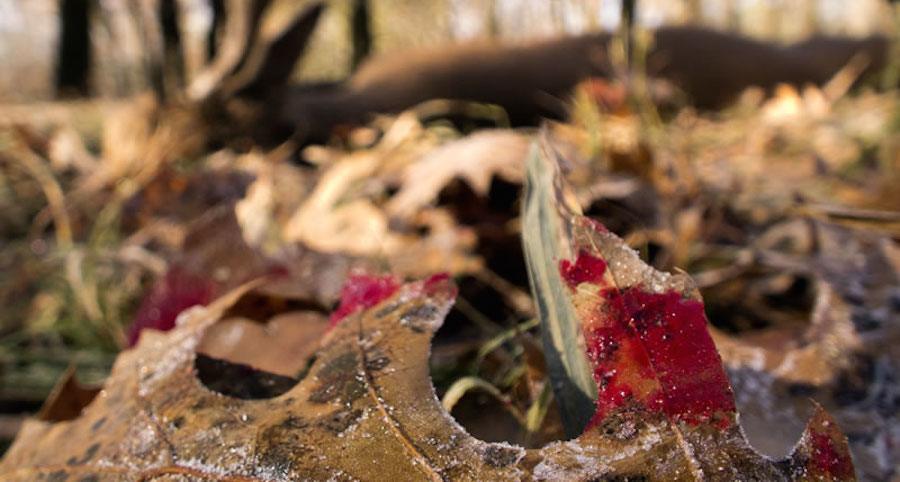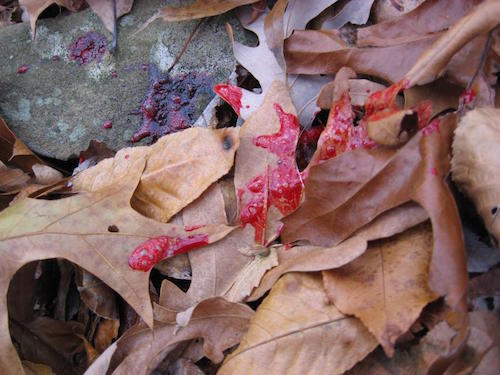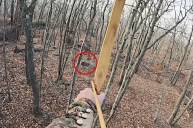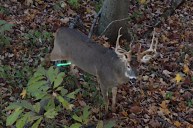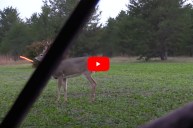If you are ready to follow a blood trail, here are four things you need to know.
Alright! Things worked out and you just stuck the buck of a lifetime. Unfortunately, it also ran out of sight immediately after impact.
There are four things that this blood trail will tell you if you know what you are looking for. Good luck!
1. Moment of Impact
Every bow shot will have a mixture of the below. Depending on that mixture, you should have a good idea how lethal your shot was.
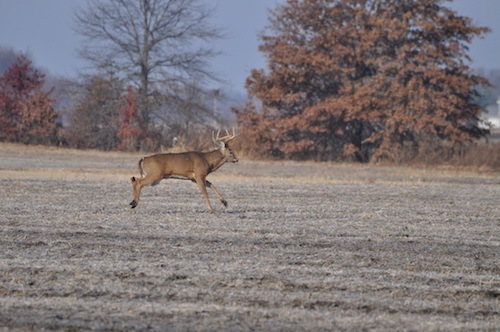
Brad Smith
- Did the buck's legs kick out like a mule? Great shot! This is most likely a hit to the vitals.
- Did the deer arch its back and hunch up? Uh-oh. Most likely, this was a gut shot.
- Was the tail up? Too bad. Tail up means that you probably didn't get a clean shot.
- Was the tail down? Wounded deer run with their tail down. Again, good shot.
2. The Need for Patience
After initial impact, be patient. Do not get down right away. Watch every step the deer takes until it is out of sight. Hopefully you see him collapse, but if not, maybe he's staggering. Make a mental landmark of when he went out of sight and be sure to check that spot if you lose the trail.
However, don't just go there first. There's a chance the buck didn't go that far and climbing down or walking out in the open might make him run even farther.
It's always best to wait at least 10 or 15 minutes before first walking out to check the scene. This will at least give the buck a chance to bed down while you investigate the blood.
3. The Color of Blood
The biggest factor when you are ready to follow a blood trail is well, the blood! The color of that blood tells you is just about everything else you need to know.
- Is the blood deep red and pretty thick? Amazing shot, you probably got him in, or very close to, the heart. He won't last long and has most likely already expired.
- Is the blood frothy and bright red? Another good shot. If the blood is frothy, that's a lung shot. He may need another 10 to 20 minutes, just to be safe you don't push him.
- Is the blood very watery and almost maroon? Still good news. This is a fatal shot, most likely to the liver. You should probably wait at least an hour before searching.
- Is there food mixed in with the blood or brown to yellow in color? Prepare yourself for a search, you got him in the gut. Depending on the time of the day, maybe wait until morning.
So far, you know what it looked like after the arrow struck. Now you see the blood. This tells you exactly how lethal your shot was.
4. Direction of Travel
Hopefully, with all of the below added up together, you will find him sooner rather than later.
- An arrow struck buck is going to run towards water and thick brush. Depending on the location of the topography of when you hit him, just figure that is where he is headed.
- If blood is found on both sides of the trail, then you have a double pass through.
- If blood is very heavy then clots up all of sudden, most likely this was gut/muscle shot.
- Often times a smart buck will also double back. If you see a normal trail, then more blood than usual all of sudden, followed by nothing, that's what happened. Double back yourself and look for an offshoot from the original trail.
No matter what you do, do not give up until you have exhausted all your resources. Call in some buddies if you can't find him. If it calls for it, start over again from the point of impact and retrace your steps.
Good luck!
NEXT: HUNTING MYTH BUSTER: DO YOU NEED CAMOUFLAGE FOR DEER HUNTING
https://rumble.com/embed/u7gve.v3to3h/
